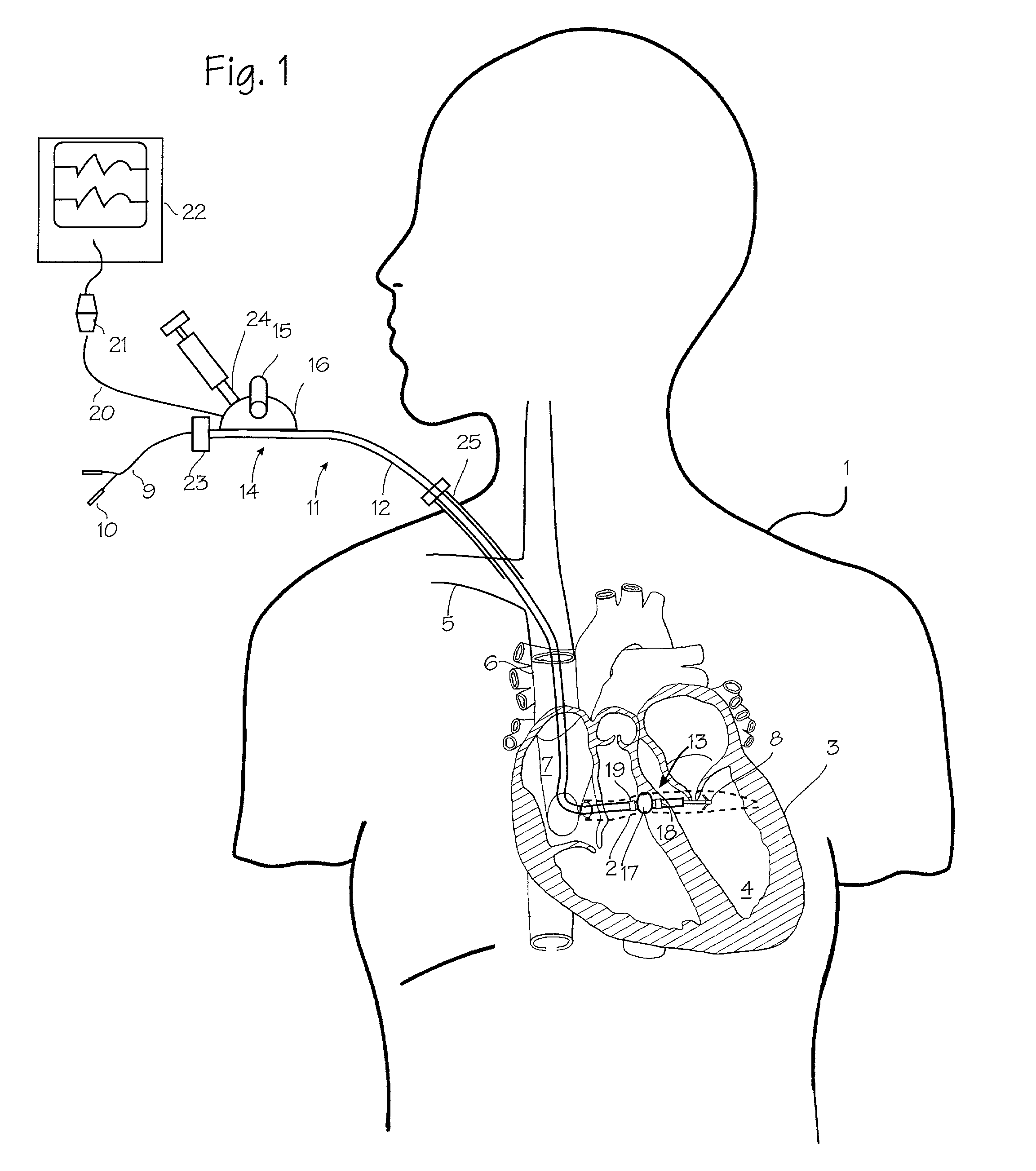Catheter systems and methods for placing bi-ventricular pacing leads
a bi-ventricular and pacing technology, applied in the field of catheters, can solve the problems of difficult access to the coronary sinus, and achieve the effect of minimizing the proximal force and being easy to cu
- Summary
- Abstract
- Description
- Claims
- Application Information
AI Technical Summary
Benefits of technology
Problems solved by technology
Method used
Image
Examples
Embodiment Construction
[0017]FIG. 1 illustrates an exemplary use of the catheter and method especially adapted for placement of devices in the human body. The patient 1 is undergoing a catheterization of the coronary sinus 2, which is the primary venous drainage vessel of the heart 3 in order to place a pacemaker lead into the left ventricle 4. Access to the coronary sinus is gained percutaneously, through the subclavian vein 5, the superior vena cava 6, and the right atrium 7. The goal of the catheterization is to place a pacemaker lead tip 8 into the left ventricle (or a location from which it can pace or stimulate the left ventricle), while temporarily leaving the pacemaker lead wire 9 itself in the tortuous venous pathway and leaving the pacemaker connectors 10 just outside the body. To achieve this, guide catheter 11 has been placed in the patient through the vasculature so that its distal tip is disposed within the coronary sinus. In the typical pacemaker lead placement, the connectors and the lead ...
PUM
 Login to View More
Login to View More Abstract
Description
Claims
Application Information
 Login to View More
Login to View More - R&D
- Intellectual Property
- Life Sciences
- Materials
- Tech Scout
- Unparalleled Data Quality
- Higher Quality Content
- 60% Fewer Hallucinations
Browse by: Latest US Patents, China's latest patents, Technical Efficacy Thesaurus, Application Domain, Technology Topic, Popular Technical Reports.
© 2025 PatSnap. All rights reserved.Legal|Privacy policy|Modern Slavery Act Transparency Statement|Sitemap|About US| Contact US: help@patsnap.com



